The AW159 is a modern, multi-role, military helicopter that provides exceptional operational capabilities for the UK and other nations for maritime and overland missions. In the UK, the British Army operates the Wildcat Army Helicopter (AH) Mk1, while the Royal Navy operates the Wildcat Helicopter Maritime Attack (HMA) Mk2, with the types having achieved Initial Operating Capability in 2014 and 2015, respectively.
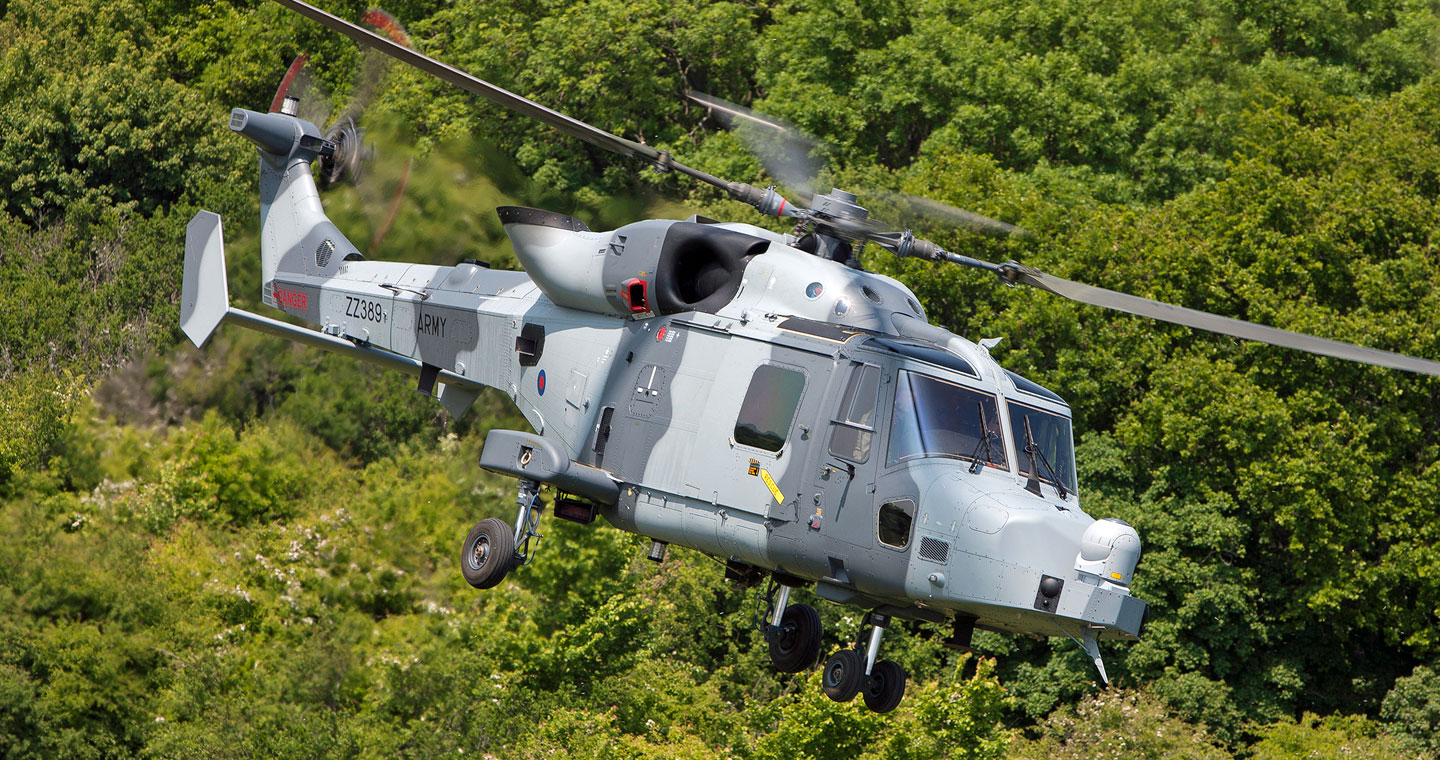
The Wildcat was the first UK military helicopter to come into service with the provision of a fully integrated support and training contract. The Wildcat Integrated Support and Training (WIST) contract was first awarded to Leonardo in 2012, and was a 34-year arrangement with five-year pricing periods. In 2022, the company was awarded a £360m contract for a new five-year period, continuing Leonardo’s and the UK Ministry of Defence’s (MOD) close and successful relationship on Wildcat.
This most recent WIST contract includes the continuing provision of synthetic and ground-based training for both Wildcat aircrew and maintainers, which Leonardo has been successfully delivering throughout Wildcat’s service life with a highly skilled workforce.
Setting up the Wildcat Training Centre
The WTC was developed by Leonardo “from scratch”, explained Richard Webber, Wildcat Training Service Manager and Chief Instructor, who was responsible for ensuring the UK MOD had a modern training establishment that met its requirements. “We had the initial set requirements from the customer, we had a brownfield site, we took the requirements and we translated those into a system and built the facility.”
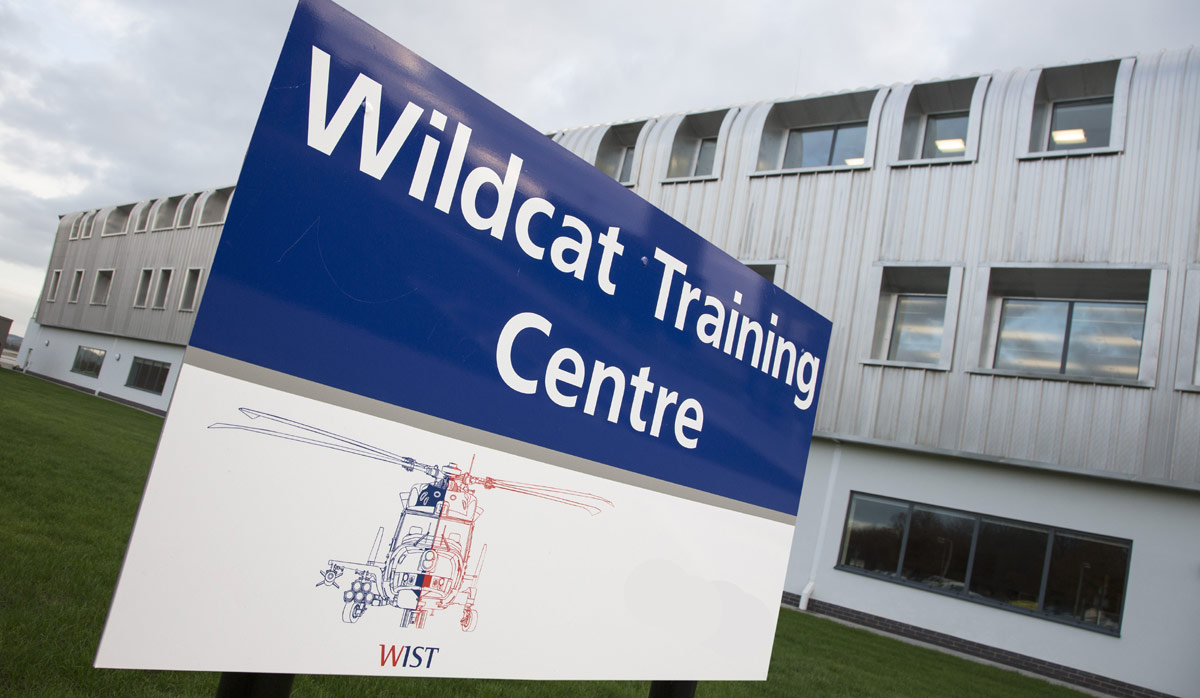
Webber added: “I've seen it all the way from its very, very early stages through to the ongoing delivery, and now we train everybody on the Wildcat.”
The Leonardo-run WTC trains approximately 600 people per year in a variety of roles; from pilots to maintainers and weapon loaders, as well as administrative roles that require interaction with the Wildcat. The WTC is staffed by former military personnel and instructors with significant experience in both military flying and ground engineering roles, which only adds to the training quality provided.
Service personnel come to the WTC from initial training to prepare for their frontline units. For helicopter flying crews, students will have already had flying experience at the Defence Helicopter Flying School based at RAF Shawbury, and will go through a programme lasting several months to be type-qualified on the Wildcat, which means they can then fly on operations.
Leveraging the synthetic environment
The training provided by Leonardo at the WTC is entirely in the synthetic environment, complementing the real-world training sorties that each service carries out at RNAS Yeovilton. The WTC leverages the latest in modern synthetic training devices, which ensures that students get the best possible training in all scenarios, especially when there are limitations in the real world.
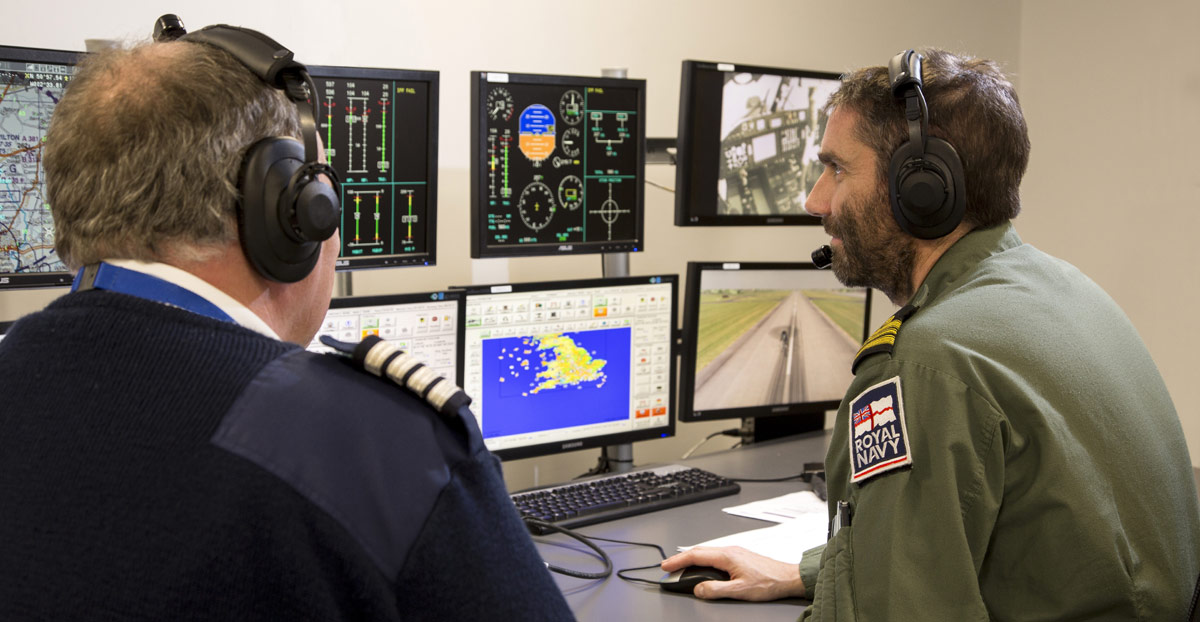
This also means that there is less burden on the real-world fleet of aircraft, particularly in terms of availability, and the accruement of flight hours and stresses on airframes and components.
The MOD has set out its aspiration for training to be at least 50% synthetic, although Leonardo estimates that this figure is closer to 63% for the WTC (and could even be higher), representing significant benefits for the UK MOD including value for money and more efficient student throughput.
Training aircrew with modern simulators
For aircrew, the WTC includes two full mission simulators (FMS), a flight training device (FTD) and a cockpit procedure trainer (CPT).
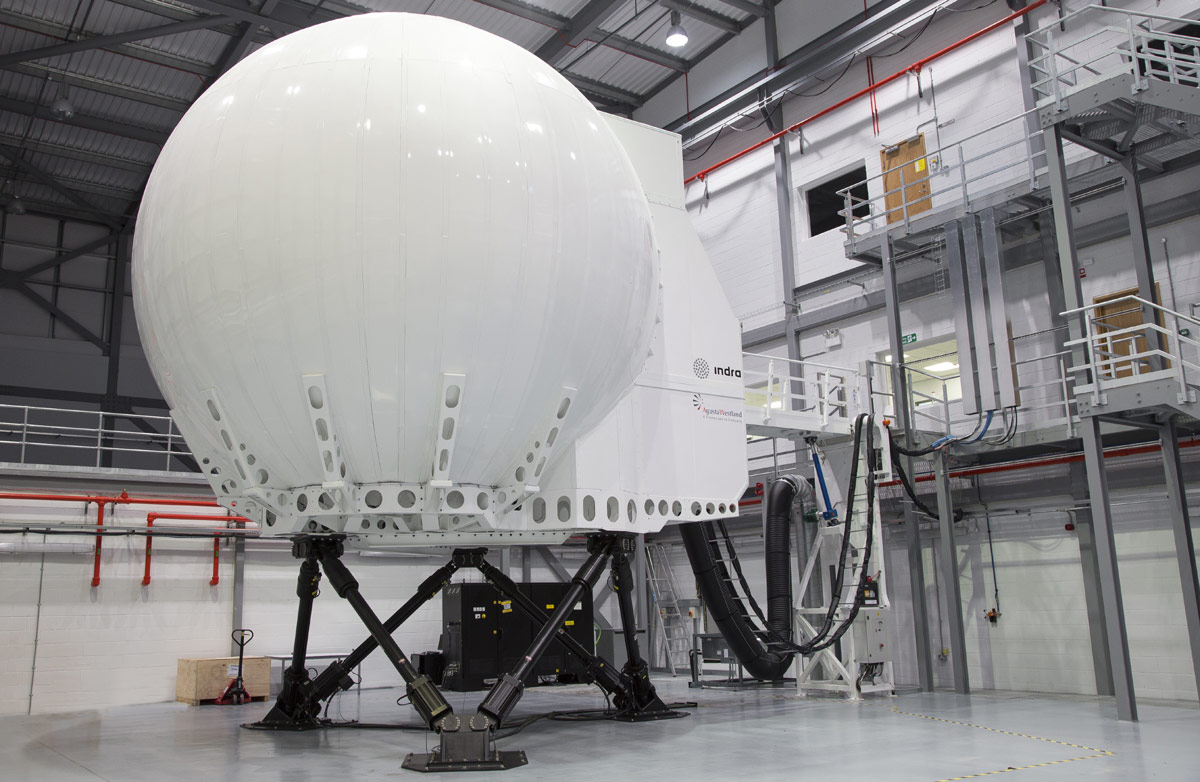
Aircrew will get their first taste of the Wildcat’s modern integrated cockpit using a fully-accurate procedure trainer, and as they progress, they will work their way up to the FMS. These full-motion simulators closely replicate what it is like to fly the Wildcat in the real world, and include a highly detailed visual system – incorporating 16 projectors – that allow pilots to look around the aircraft and over their shoulder as they would do on operations.
“This means we can expand the delivery of the training scope so we can facilitate things like deck landing practices, which were extremely limited previously, since you didn’t have the ability to look over the shoulder,” explained Webber.
As well as experiencing motion, the FMS can also simulate the ‘Gs’ being pulled through manoeuvres via a mix of visual and physical cues, building that immersion further. It can also simulate the platform’s sensor feeds, as well as the real-time transition from day and night conditions, which was not possible on older generation equipment
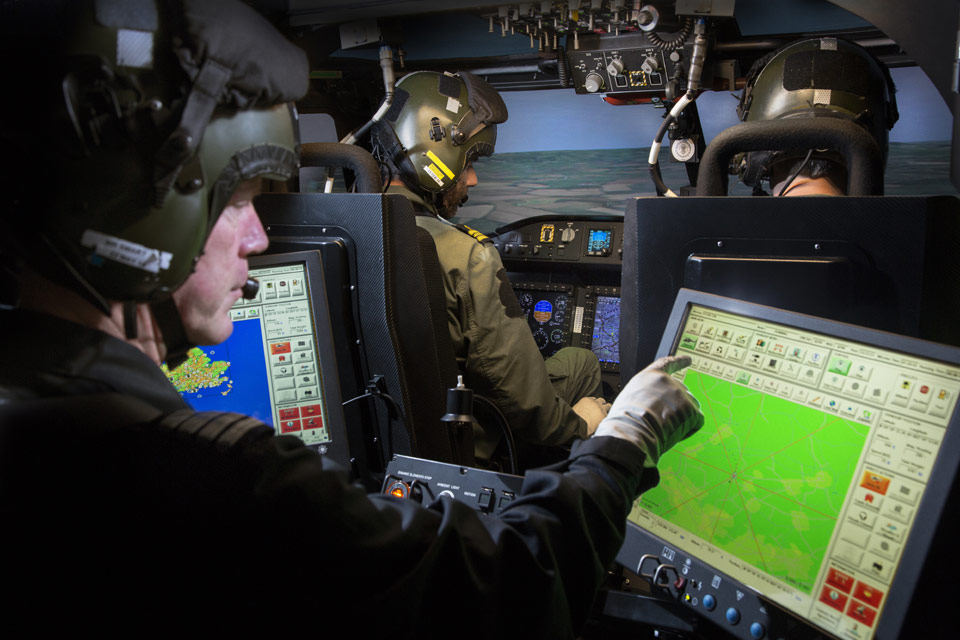
All aircrew training devices share common software and firmware, and as the Original Equipment Manufacturer (OEM) for the Wildcat, Leonardo’s real-world and up-to-date aircraft data and flight parameters provide both the British Army and Royal Navy with significant benefit, something which is not always the case on third-party devices.
Using a non-OEM training solution can often lead to a significant latency of several years between the current version of the real-world aircraft and the virtual aircraft, something that the WTC and the UK MOD do not need to worry about.
Training the maintainers
In addition to the aircrew trainers, there are three engineering training platforms that look very similar to real Wildcat aircraft in a hangar; these are used for mechanical systems, avionics and weapons loading training. Students are able to review technical procedures in a classroom and then carry them out on the training platforms, emulating closely what happens in the real world.
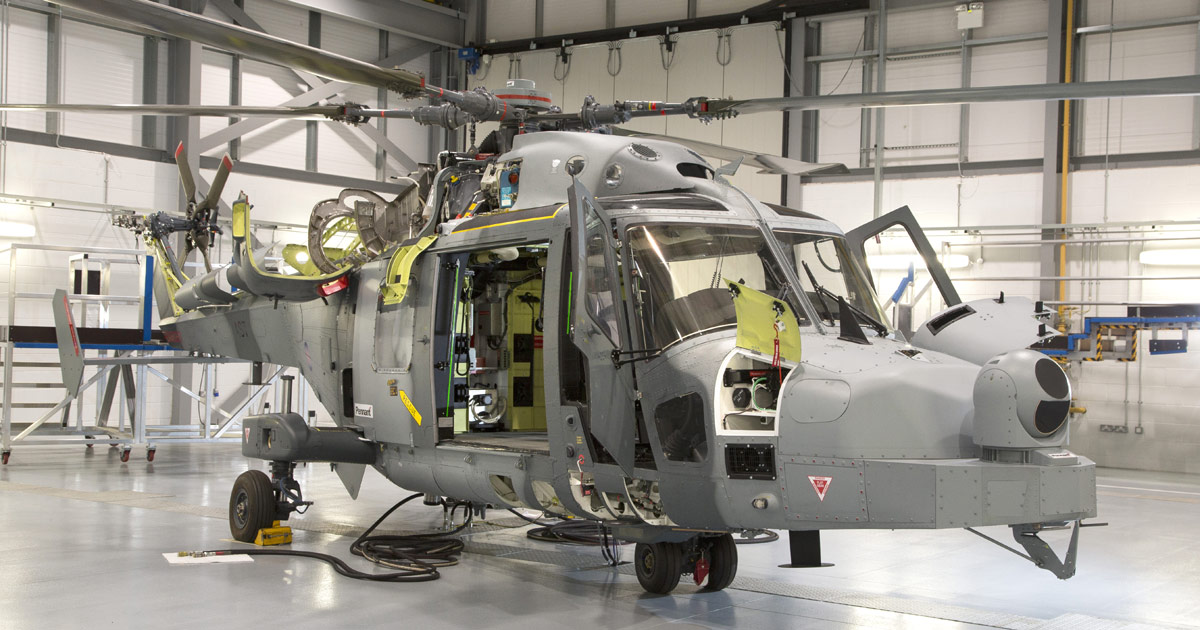
“We create a highly immersive environment,” said Webber. “When the trainees come in, they feel that they're in a hangar, they feel that they're in a squadron and in the squadron building in terms of how we conduct the training. It’s all done at the same job fidelity as it would be for real.”
Leonardo has recently introduced a new training device that will allow ground personnel to simulate the handling and loading of the Royal Navy’s next-generation Future Anti-Ship Guided Weapons (FASGW): Sea Venom and Martlet. The Weapons Loading System Trainer (WLST) allows crews to practise loading the Wildcat HMA Mk2 with FASGW and even go through simulated faults and errors, as could happen in the real world.
This is just another example of how Leonardo, as the OEM, can closely replicate the real-world aircraft and systems as they are fielded to the frontline, with no loss of fidelity in the synthetic world and greater outcomes for students.
Conclusion
With the WTC, Leonardo provides a world-class training establishment for the UK military, drawing on the latest technologies and learning tools. The company’s close and long-lasting relationship with the UK MOD and the individual services allows it to deliver training programmes and capabilities that closely replicate the real world, ultimately resulting in students – whether in the air or on the ground – who can perform their tasks with greater proficiency and confidence when they join their frontline unit.

